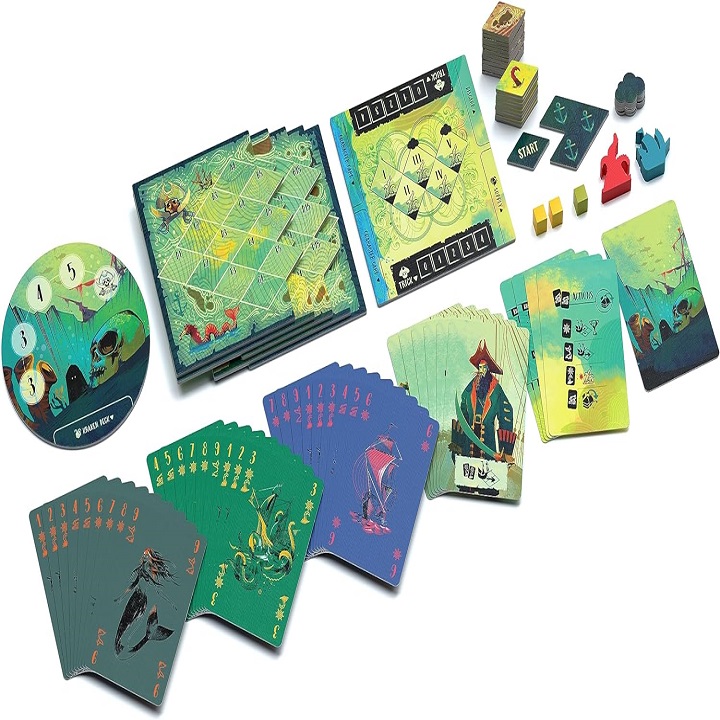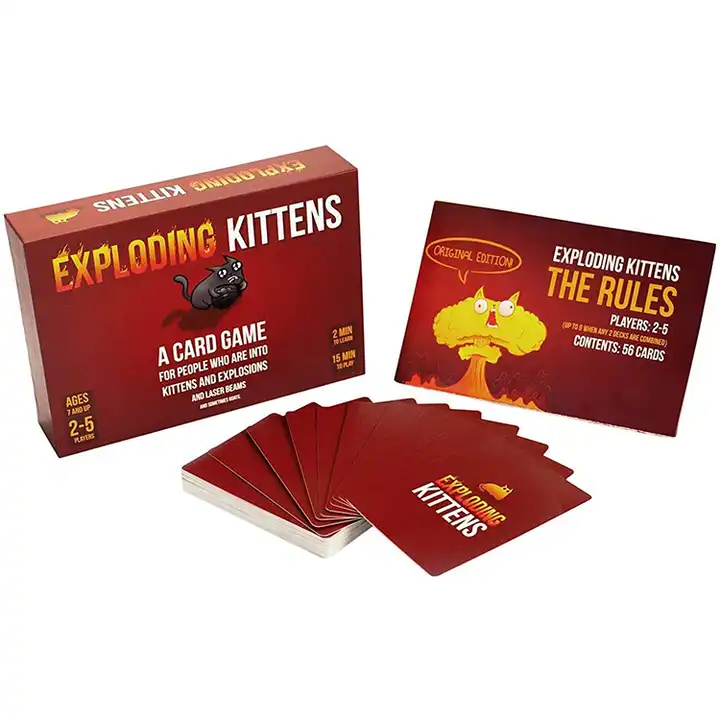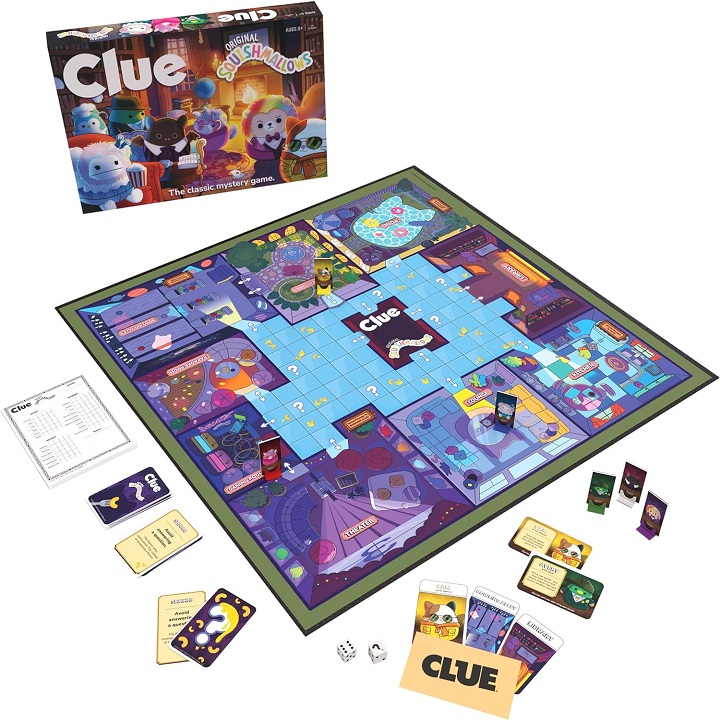Content Menu
● Introduction to Card Game Design
>> Defining Game Objectives
● Developing Card Mechanics
>> Types of Card Mechanics
● Designing Engaging Cards
● Creating Visual Appeal
>> Best Practices for Visual Design
● Prototyping and Testing
>> Prototyping Methods
>> Testing Strategies
● Conclusion
● Frequently Asked Questions
>> 1. What are the basic elements of card game design?
>> 2. How do you make card games more engaging?
>> 3. What types of card mechanics are commonly used?
>> 4. Why is visual design important for card games?
>> 5. How do you balance powerful cards in a game?
Board game cards are a fundamental component of many tabletop games, offering a rich source of strategy, interaction, and fun. These cards can represent anything from characters and abilities to resources and events, and their design plays a crucial role in shaping the player's experience. In this article, we will explore the elements that make board game cards engaging, discuss various types of card mechanics, and provide insights into designing effective card games.
Introduction to Card Game Design
Card game design involves creating a set of rules and interactions centered around a deck of cards. The primary goal is to ensure that players have interesting choices to make throughout the game. This can be achieved by introducing diverse card types and mechanics that interact with each other in complex ways.

Defining Game Objectives
The first step in designing a card game is to define its objectives. What constitutes winning the game? Is it accumulating points, completing a set of cards, or defeating opponents? The objectives should align with the game's mechanics and play style, providing a clear direction and purpose for the players.
Developing Card Mechanics
Card mechanics determine how cards function within the game. Cards can represent resources, actions, characters, or events. The interactions between cards, such as combinations, counters, and synergies, are crucial for creating depth and strategy.
Types of Card Mechanics
1. Resource Management: Players must manage resources like mana or energy to play cards. This mechanic is common in games like Magic: The Gathering and Hearthstone.
2. Deck Building: Players build their decks during the game, adding new cards to improve their strategies. Games like Dominion and Ascension use this mechanic.
3. Hand Management: Players manage their hand by discarding cards, manipulating their order, and playing them at the right time. Rummy and Go Fish are examples of hand management games.
4. Set Collection: Players collect cards with specific traits to complete sets that offer special abilities or points. Pokémon and Combo Fighter use this mechanic.
5. Action Drafting: Players select actions from a limited pool, forcing them to adjust their strategy based on available options. Games like 7 Wonders Duel and Jaipur use action drafting.
6. Bidding Mechanism: Players bid for tricks or outcomes, adding negotiation and risk evaluation. Spades and Hearts are classic examples.
7. Bluffing Mechanism: This adds deception and psychological elements, as seen in Poker and Teen Patti.

Designing Engaging Cards
To make cards engaging, designers should focus on creating interesting choices and interactions. Here are some strategies:
Archetypes and Synergies: Create groups of cards that work well together, making certain cards more valuable in specific contexts.
Card Combinations: Design cards that interact with each other in unique ways, offering strategic depth.
Balancing Power and Cost: Ensure that powerful cards have corresponding costs or drawbacks, forcing players to make tough decisions.
Creating Visual Appeal
The visual design of cards is crucial for creating an immersive experience. Illustrations and graphics should communicate the card's function and theme effectively. Working with professional designers can help create unique and captivating artwork that enhances gameplay.
Best Practices for Visual Design
1. Use Vectors for Logos and Text: Vectors ensure that logos and text remain clear and sharp when scaled up or down, which is essential for maintaining visual quality across different card sizes.
2. Set Generous Margins: Leave enough space around the artwork to prevent trimming during printing. This also allows for a bleed zone, ensuring that colors extend to the edge of the card.
3. Correct Bleed Settings: Use a bleed of 3 mm / 0.125" around all artwork to ensure that colors do not get cut off during printing.
4. Consistent Design Language: Use a consistent design language across all cards to create a cohesive look and feel. This includes using similar fonts, colors, and artwork styles.

Prototyping and Testing
Prototyping and testing are essential steps in card game development. They help refine the game mechanics and ensure that the game is fun and balanced.
Prototyping Methods
1. Paper Prototyping: Use index cards or paper to create quick prototypes. This method is inexpensive and allows for rapid iteration.
2. Digital Prototyping: Use software like Adobe Illustrator or Cocos to create digital prototypes. This method is more precise and can be easily shared with team members.
Testing Strategies
1. Playtesting: Conduct regular playtesting sessions with diverse groups of players to gather feedback on game mechanics and card interactions.
2. Card Balance: Test each card to ensure it is balanced and contributes to the overall strategy of the game. Make adjustments as needed to maintain game balance.
Conclusion
Board game cards are the heart of many tabletop games, offering a rich source of strategy and interaction. By understanding the core mechanics and designing engaging cards, game designers can create experiences that captivate players and encourage replayability.
Frequently Asked Questions
1. What are the basic elements of card game design?
The basic elements include defining game objectives, developing card mechanics, and ensuring that cards interact with each other in meaningful ways.
2. How do you make card games more engaging?
Engaging card games are made by creating interesting choices and interactions through card combinations, synergies, and balancing power with cost.
3. What types of card mechanics are commonly used?
Common mechanics include resource management, deck building, hand management, set collection, action drafting, bidding, and bluffing.
4. Why is visual design important for card games?
Visual design enhances the player's experience by making cards visually appealing and communicating their functions effectively.
5. How do you balance powerful cards in a game?
Powerful cards should have corresponding costs or drawbacks to ensure that players must make strategic decisions about when to use them.































